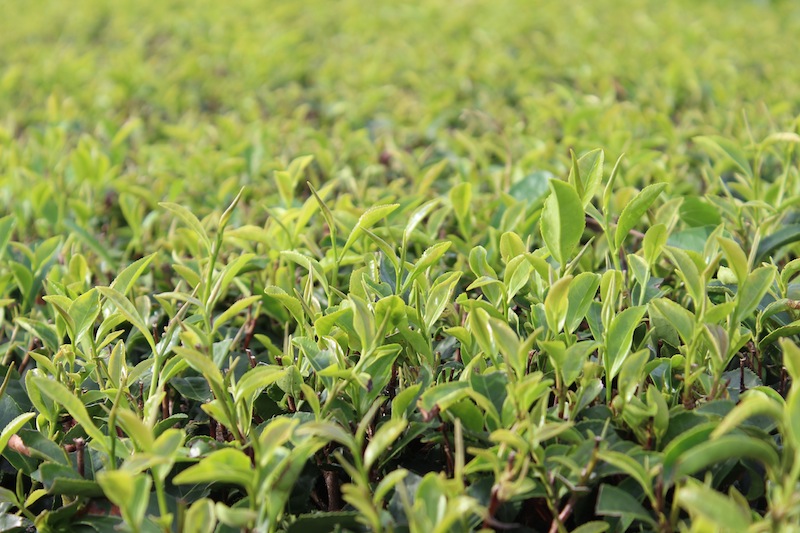2013.09.01
Tea Plantations in Spring and Summer

If you compare the bottom picture of the first generation of young tea leaves that were cut in spring which was taken on April 29 and the picture of the third generation of young tea leaves that were cut in summer which was taken on August 25, 2013, do you see the difference? The first generation of young tea leaves was bright green and young-looking, but the third generation of young tea leaves was yellowish green and the tea stalks started to become hard.
“Shincha” (新茶) or the first generation of tea has sweet taste and nice aroma. The tea leaves are soft and give out sweet flavor since the young leaves are packed with amino acids and catechin. The new tea, therefore, will taste delicious. As for the tea leaves from the next generations, they have a lot of catechin but fewer amino acids.
With its tasty flavor, beautiful color, soft green leaves, wonderful aroma and high nutrients, there is a high demand for the first generation of tea among consumers. As a result, it is the most expensive tea. The prices of the second generation and the third generation of tea will descend respectively.
Most Japanese people will be excited with the “Shincha” festival or the first generation of tea of the year. It is like the new year of the tea industry. However, it does not mean that the tea which has been kept for more than a year cannot be consumed. It is still okay for consumption, but the flavor and the quality of tea may not be as good. If you keep the tea bag tightly closed and put it in the fridge or the freezer, it will help maintain the quality of tea.




2013.01.24 |
2013.01.23 |
2013.01.13 |
2013.01.06 |
2012.12.07 |
< Previous 12345 Next >
















